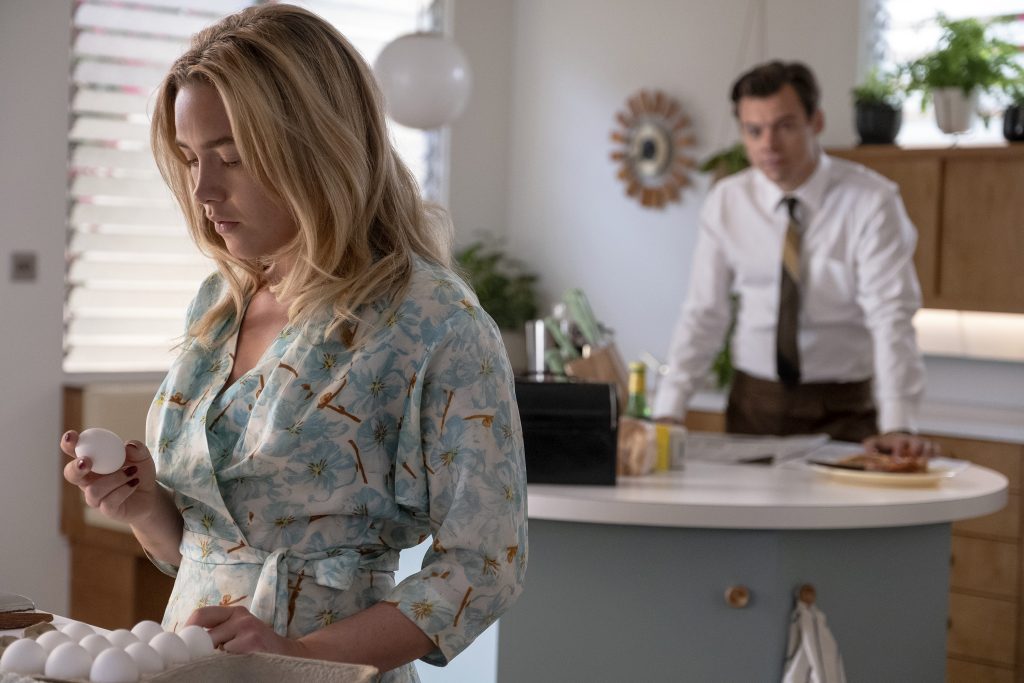“Don’t Worry Darling,” the psychological thriller directed by Olivia Wilde, almost lived up to the hype of the star-studded cast and the drama built up prior to its release. With chatter about the movie for months before because of the supposed relationship between Harry Styles and Olivia Wilde, as well as Florence Pugh’s minimal press for the film, audiences were eager to see how the film turned out. Although there have been mixed reviews, “Don’t Worry Darling” blew viewers away with the incredible plot, cinematography and spectacular performance by Pugh.
In the film, Styles (Jack) and Pugh (Alice) play a perfect couple in the utopic town of Victory, where everything is perfect — the men leave for their secret jobs while the women cook, clean and shop, living in a problem-free, 50s-style isolated community in the desert. This community was created by a mysterious man named Frank, played by Chris Pine. Everyone seems oblivious to the fact that their lives are eerily perfect except for a select few, including Alice, which sets up the movie’s plot, and while all of Alice and Frank’s friends (which include Nick Kroll and Wilde) go about their blissful lives, Alice slowly realizes that this perfect life may not be as perfect as it seems. She hallucinates and tries to uncover the secrets of her community while falling into a state of paranoia that nobody else seems to understand.
The film is full of incredible visuals, from 50s-style outfits, cars and homes, to flashes of creepy images. Although many parts of the film had patterns and repetition that felt necessary and added to the overall film positively, there were a few parts that could have been improved on. Alice’s same routine every day which slowly changes and crumbles as she deteriorates into paranoia was a fantastic use of patterns, yet there were flaws. She hallucinates images of eyes, dancers and more, which were interesting visuals, yet lack meaning for the overall film. It does hint at the fact that her reality was not what she previously thought, but the hallucinations lacked real substance in relation to the plot as a whole.
Pugh never fails to deliver when it comes to difficult roles, and “Don’t Worry Darling” was no exception. This role truly showed Pugh’s power as an actor, working alongside Styles in one of his first major acting roles. Playing a bland, generic man like Jack, Styles needed a fantastic lead to keep the film exciting and interesting, and Pugh was clearly the right choice. The fact that it was solely from her perspective, with no dramatic irony, allowed for a more intriguing film, making it hard to look away for a moment for fear of missing something. Forcing the audience to unravel the mysteries of the film with Alice was an excellent choice, separating the film from others with similar conceptual styles, like “The Truman Show.” The film focuses on both male control and female pleasure at the same time, producing an interesting paradox that Pugh executes perfectly.
Although the plot, acting, cinematography and more were great, the ending did not live up to the suspense that the film was building. Although there was no preparing the viewer, or Alice, for the truth behind the Victory project, the ending felt abrupt and slightly unfulfilling. It felt slightly rushed and, while the concepts and many parts of the ending were excellent, in comparison to the pace of the rest of the movie, it could have been slowed down and more thought-out to allow for a more satisfying end to the film.
“Don’t Worry Darling” felt like a mix of “The Truman Show,” “Midsommer” and “WandaVision” wrapped in one, but in its own unique way. Regardless of the mixed reviews, overall “Don’t Worry Darling” was a good film and should be added to your watchlist.
Rating: 3.25 out of 5 stars



